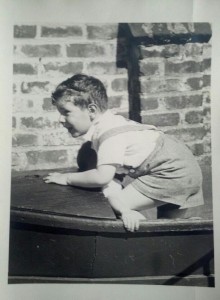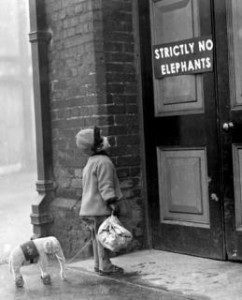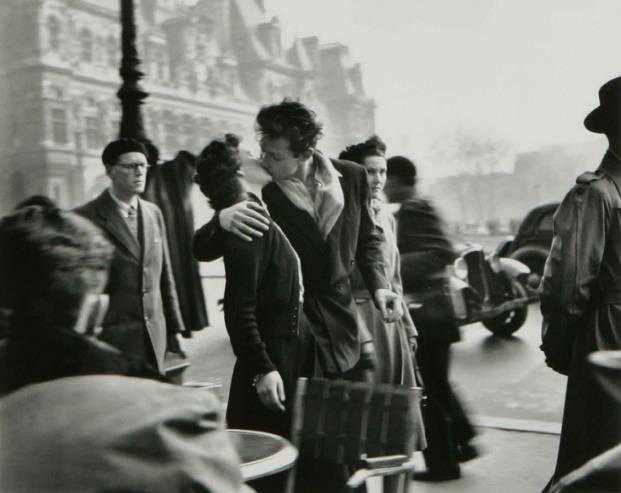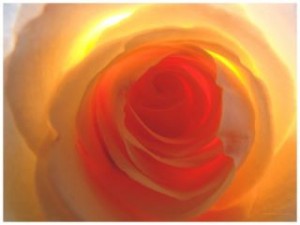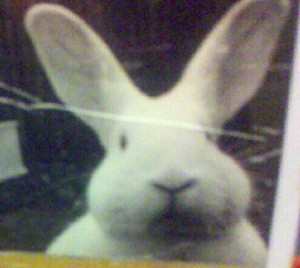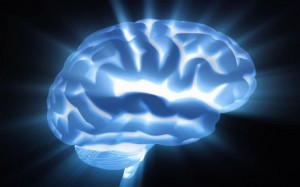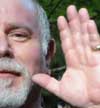Uncovering Our True Self
 We are complex beings that are capable of wondrous things.
We are complex beings that are capable of wondrous things.
One of the most beautiful things we have the ability to experience, is feeling love.
In this chapter of Empathic healing, we are going to discuss what some of the most common barriers to feeling loved may be. We will then do an exercise that will help us remove the barriers to love.
It is important for us to understand how powerful conditioning that we are not conscious of, can be in shaping our lives. If we were once conditioned by fear to withdraw from, or suppress our emotions, that old conditioning will still create guarding inside of us now… and alert our autonomic nervous system to protect us.
If we have been conditioned to fear emotional intimacy, the old conditioning is initiating physiological responses, perceptions and ultimately making decisions for us. The distress and anxiety we feel when someone wants emotional intimacy is because of this old conditioning.
It is difficult to separate the conditioned responses associated with feeling emotionally vulnerable and what we may think is the normal way to feel about someone.
Our reactions may seem like correct emotional responses but the conditioning to feel fear when loved, will have control over our lives.
Today, we will rewrite some of the conditioning we have that creates a negative physiological response to emotional intimacy. Afterward we will be able to experience relaxation, better sleep, creativity, and a connection to our emotions and feelings without fear.
Old fears create our nightmares….and our fears influence how we feel about ourselves. These old fears can creep into the stories we have about our lives that see played out in the daytime, if we do not remove erroneous fear.
Our brain wants us to see our fear and understand it as something that was our past….our old fears are what make us feel distressed and immobilized.
Today we will do an exercise that takes a few minutes and we will feel safe from that moment on, experiencing our emotions.
We will feel our emotions and feel wonderful afterwards.
If we face our worst fear, get angry at the person that created the fear and afterwards feel great, we will rewrite the conditioning that tells us to be afraid to feel angry at that person we fear most.
At the end of feeling angry we need to also feel good, so that we “prepare to feel good” automatically when we experience emotions of anger or sadness towards the person that hurt us. After we experience feeling what we are most afraid to feel, we no longer have conditioning to “be afraid to feel emotions.” This exercise will allow us to experience much more of the depth and width of life, without fear.
After the exercise today, we can continue to allow ourselves to emotionally and physically experience emotions about our past. Please always remember to feel good before and after going back to the past to feel emotions.
As we experience all of our emotional truth, a deeper sense of well being, presence, confidence and authenticity to emerge within us. This new sense of self will give us the strength to enjoy the experience of real love, vulnerability and enhanced states of ecstasy.
The first stage of fear is when we feel paralyzed by fear because we are in our head trying to find out what the cause of the problem is and what we need to do. If we are conditioned to be afraid of deep emotions, we will feel fear when we feel emotionally vulnerable, we will also connect the feeling of fear we are conditioned to feel, to someone in the present.
If the cause of our fear is conditioning that also prevented us from feeling deep anger or sadness towards the person that hurt us, feeling that anger or sadness now and tagging the person that caused that intense fear a long time ago, will put a face on our fear.
Now that there is a face on our fear and we have felt our fear…. and felt safe afterwards, we no longer have the conditioned response to feel fear feeling these old emotions.
We may feel unsafe feeling vulnerable or in love but the feeling of wanting to trust someone, is so much better than wanting to hurt someone before they hurt us or feeling upset by someone that cares….
Putting a face on our fear also allows us to feel safe relaxing, so we stop having anxiety, sleep better and are much healthier.
We have more control of our life when we connect to both the intellectual and emotional aspects of our brain.
Get a mat and put it on the ground.
Get a plastic bat.
Get something like a footstool you can hit with the plastic bat.
Get on your knees on the mat and be in front of the footstool. Grab the bat with both hands.
Think of the person you were most frightened by. If that person was someone that frightened you when you were a child, then remember them. If the person that frightened you was someone after childhood, then focus on that person….you know, the one who never listened to you when you were upset.
Now feel how you were frightened by them for perhaps ten to thirty seconds and before you go numb….go into your emotions and get as angry as you possibly can! Now hit the footstool with the bat and yell, “I hate you! (or whatever)” as loud and as you can. Hit the footstool perhaps 5 or 6 times and yell during that, then take a deep breath, feel proud of yourself, happy and get up and relax and you are done.
Do not dwell on anything or go into your head but instead do something to feel good and be in your body. Go for a bike ride, get a massage, take a hot bath or dance. The important part is to just not think but feel great physically.
Do this exercise three times and try to do it within two weeks. The exercise should take less than five minutes each time, so you will have put fifteen minutes of intense work into this to remove the conditioned response.
You should feel better within a few days.
You pushed love down the stairs…
I grew up in San Francisco and when I was a kid, I would walk my wagon up a steep hill by my house and ride it down the middle of the street. I remember flying in the air when my wagon would hit bumps. There were moments I achieved weightlessness. Floating or flying, whatever it was, it was wonderful.
I remember flying far out of my wagon on some bumps. Sometimes I would leave the wagon completely and land on the road.
As children, we all got hurt playing. We got up if we fell down, wiped the dirt out of our hands and kept playing.
I got hurt learning to ride my bike too. I bet you got hurt learning to ride your bike. We get hurt many times growing up but getting hurt playing never changed how we felt about ourselves.
When the people that we trusted to love us, hurt us, it did change the way we felt about ourselves. Most people do not stop playing because they got hurt playing, they stopped playing because they were hurt emotionally.
If we became numb during the time someone hurt us, we may not remember why we stopped playing. Come with me and I will show you how we can find a connection to the playful part of us, once again.
When we are infants, we are unable to take care of ourselves and need our parents to take care of us. We focus on our parent’s emotions and happiness more than our own, because we need them for our care.
Betrayal, trauma or neglect hurt us emotionally, we get upset…and when we experience our emotions of sadness or upset, if our emotions make the person that is hurting our feelings more upset and they hurt us more…it is natural for us to stop having emotions, in order to be less abused… Denying our emotions is how we quickly lose our connection to “self” and soon, we stop playing fearlessly.
Connected to our own feelings about ourselves is where we are strongest.
The feelings of someone we bond with become a part of how we feel about ourselves. It is sad, but becoming numb actually makes the feelings of insecurity we have, hard to experience and understand as not our own feelings but the feelings someone else had that was in my opinion a jerk.
These are feelings someone conditioned us to have about ourselves. We were conditioned to become numb when they got emotionally upset about being hurt by someone. When we were numb, it was easy to condition us to accept their feelings about us, instead of our own.
Each time they lied to us and promised us love and took love instead, we had a dissonance occur in our brain that was created by our caring more about them than they did for us. This dissonance in our brain made us infatuated with the pursuit of their attention and love. This pursuit, of the admiration and attention of someone that does not love us, is the foundation for narcissism. The feelings of insecurity we have from someone that hurt us, is more about them and less about us. Each minute we get back up and fight to get our life and emotions back, the insecurities we have, just like realizing a nightmare was just a bad dream…disappear forever.
We were happy playful kids. We took on the feelings of the person that hurt us and bonded with them because we did not have our own feelings and emotions.
Understanding our insecurities are not about us is important. Our insecurities are like weeds that someone else planted and have nothing to do with us.
The insecurity weeds grow larger each time we listen to someone that tells us to abandon our emotions. Our emotions are the beautiful flowers that grow in our garden, when we care about them.
Re- connecting to our true self is like finding our garden, we have to hear and experience all of our emotions. We were not comfortable having the emotions that created our aliveness but we need to reconnect to them now. When we have compassion for our heart, we open the well that waters the garden and we bloom again.
When we love someone that loves us, we see who we are. We stop being worried about what others think and we enjoy what we are doing.
Narcissists are everywhere now, it is important for our ability to re-connect with our self, that we avoid them.
Humans are not able to be introspective without emotions. As a narcissist, a person is not able to realize they do not have much empathy for others they want in their lives.
Narcissists can speak of love and tell you they love you. Narcissists have dramatic swings of feelings about themselves because “feeling admired” is far from connecting to the real child/person within.
If we bond with a narcissist and we become numb, we risk losing the ability to connect to our emotions and become our authentic selves.
(Here is where we push love down the stairs…)
I was emotionally hurt a long time ago and because of that I began studying A Course in Miracles and Neuro Linguistic Programming. After doing N.L.P. for a while, I became a narcissist. It was great not to feel sad but I did not notice I was not feeling many emotions at all.
I did a lot of work to feel my emotions again and I am proud to say I understand how much better life is feeling all my emotions. I am no longer a narcissist and would be glad to help anyone that wants help re-connecting to their authentic self.
Yesterday on a new age radio network, I was listening to a very popular author. She was taking calls from listeners and helping them with the problems they had.
The woman that called in wanted to know, “Why do I keep chasing after people that hurt me?”
The author told the person, “You need to stop caring so much about people in your life and become selfish. You deserve to be happy.”
We do not need to become selfish, or narcissists to be happy.
When we are whole and connected to our emotions, we are able to be happy and love others.
I am sad to hear so many people telling others to do something that would only bring symptomatic relief and then bring the caller back needing more.
To remove the cause of a problem, I would ask more questions of the caller. If I understood more, I could empower the caller to remove the cause of their problems themselves.
There are maps that allow people to return to the connection they once had with themselves. Each map is unique because our path is our life. It is wonderful to show someone how he or she can create a wonderful re-bonding experience himself or herself.
It is only through love that we can heal our broken heart.
In loving our children, we see our own beauty. The person that runs into our arms with love is the mirror we want to have.
The love we have for the person that loves us, will allow us to see how much we are like the person we love and we will bond to the feeling they have about us.
When we have bonding experiences with souls that reflect how lovable and wanted we are, we will once again play with abandon.
Step Two Seeing the Beauty of Our Soul
How do we grow as a person so that we can experience our beauty reflected in the world we see? One of the important steps in the process is to develop an appreciation for the beauty of our soul.
When we are able to experience the beauty our soul has, we are able to open our heart much more. As we open our heart we turn up the volume on all of our senses and experience much more.
“How” we see ourselves is important for our growth. In particle physics, you may have learned that “how” we observe an object changes it. If we are only able to see light in the form of a particle, light will become a particle. When we are only able to see light in the form of a wave, light will become a wave.
How we observe something in particle physics changes it. “How” we observe ourselves changes us as well.
If we put on a new outfit, we feel wonderful. When we feel wonderful, we experience ourselves in a way that allows us to be more ourselves. Who we are when we are more ourselves, allows us to create experiences we would not have, if we were not feeling whole.
What creates the way we “see” ourselves? Our brain works as a unit for many tasks but not all tasks. Some areas of our brain have specific duties. One area of our brain adjusts our pupil size and another area has the ability to analyze information the information our eye receives about the spectrum of light. This area of our brain adds the value of color to an object.
Another area of our brain adds the emotional value others have for us. “How” we see ourselves, is an emotional value we place on ourselves. “How” we see ourselves may be different in each relationship we have. How we see ourselves also changes the outcome of each relationship we have.
Our brain is primarily a social tool for us to interact with others. The part of our brain that ascribes the value or meaning of the facial expressions of others, does this for us instantly. In the same instant, the same area of our brain will change how we feel in relationship to someone’s facial expressions. We also understand what we may expect as an outcome of this relationship in the same way.
We learned “how” to feel about ourselves from our early experiences. The part of our brain that “sees” us, does not understand language.
Step number 2 is about seeing the beauty of our soul. We will be doing exercises that allow us to rewrite the conditioned way we see ourselves in various relationships. The exercises give us an experience that allows us to see the beauty of our soul reflected in the eyes of everyone we have a relationship with.
We learn to dance, float or ride a bike and have a new experience of ourselves that allows us to see ourselves differently. “How” we now see ourselves has been enhanced because of a new experience of ourselves. The way we get updates in our brain so we can see ourselves in a new way is not from words or ideas but from a new experience of our self.
How does seeing our self in an enhanced way improve our life in an objective way? When we are interviewed for a job, our job is to move a person’s feelings about us towards our goal of offering us the job. If how we see ourselves is as a wonderful person, the person interviewing us will instantly understand how we feel. If we do not feel comfortable, the person interviewing us will understand this too, without us saying a word.
If we ran out onto a stage because we were late and the audience lights were on so we could see the audience, we would look into the eyes of the audience and see them as judgmental. How we felt about ourselves (anxious) would be added to the value or meaning of what we felt was behind the eyes looking at us.
If we feel wonderful, relaxed and lovable before we went onstage, we would see the audience love us. Conditioning is the “preparation” added before we do something. The feeling we have inside us about ourselves is what we see in the eyes of others.
If we have a good objective experience of ourselves a few times, each experience will validate a new and enhanced automatic way of seeing ourselves. Just as when we learn to dance, we can have an experience of ourselves in any social situation or relationship that will allow us to be more comfortable and whole.
Seeing love in someone’s eyes now becomes what we prepare for automatically each time we see them or when we go onstage. We now have a new conditioned response and a new outcome because of it.
If we saw ourselves as unlovable or someone that had to accept mistreatment, we might have lived out a story similar to a tragedy. When we appreciate who we are and respect the beauty of our soul, we give ourselves the ability to rewrite our story and create the life we want.
Seeing the beauty of our soul is what this lesson and group is about. The 2nd group gives us the support of having a new experience of ourselves in any relationship we want to improve. The experience allows us to see the beauty of our soul in others eyes.
As we learn to appreciate the beauty of our soul, we develop the ability to also see beauty in the souls of others. When we see the beauty of a person’s soul it is wonderful to see how much they enjoy showing us all of the beauty they have. As we open our heart and connect to others in this way, we create an enhanced experience.
The Seven Step Program
The 7 step program:
1) It’s my life
2) My soul is beautiful
3) Emotions add color to the world
4) Teaching my brain to reward me
5) Creating feelings in others
6) Opening my heart to create what I want
7) Relationships
Each step and peer support group will enhance our experience of life.
Step 1 – “It’s my life”
A person entering the group accepts that they are now “their own parent” and have the responsibility of giving themselves the love and happiness, they always wanted to have.
We take responsibility for hearing and seeing who we are. This means that we honor our feelings.When we cry inside, we hear it and do something about it. When we are our own parent and hear our inner child, we feel heard. When we listen we become more alive.
When we laugh and are happy, we reward ourselves by being proud we were good to our inner child. In this way we feel seen for who we are. We become more confident and whole each time we reward what makes us happy.
By being there all the time for our inner child, we re-pattern our early bonding experience. Because of this we have an enhanced experience of ourselves in the world.
As we feel ourselves as a caring and loving parent that is always there, we develop object permanence. Object permanence is the grounded feeling people want. We feel safe, at home and wanted no matter where we are.
The group allows members to talk about the new relationship they have with themselves and how they are parenting their inner child. We support each other as loving and compassionate parents that are learning more all the time.
This first step in opening our heart, is wonderful when we have support for the work we do.
Confident part II
 Most of us never think of ourselves as timid or confident. What is the difference between someone timid and someone confident?
Most of us never think of ourselves as timid or confident. What is the difference between someone timid and someone confident?
In my opinion the difference between someone timid and someone confident is this: A timid person is uncomfortable and wants to stop feeling that way. A confident person has the ability to connect to what is going on inside of themselves and feel comfortable being vulnerable.
A timid person does not feel comfortable being more vulnerable. A confident person relishes the naked joy of their emotional vulnerability and is capable of being proud of themselves for growing.
A timid person is not comfortable experiencing their own feelings and emotions. A confident person experiences all of their feelings and emotions and is able to be vulnerable, open and grow from the lessons they learn.
People can see what is happening outside of themselves and want that to change. People discuss intent with me and ask me how to change intent so they may have happiness. When discussing intent, I tell people that we create things because we are comfortable having something, not because we want something we have not had.
I tell people that have relationships that leave them feeling empty to become comfortable experiencing their own feelings as a first step. After we experience our feelings it is possible for us to give ourselves the feelings we want to get from others. When we love ourselves, the universe will send us help.
A timid person wants to stop feeling uncomfortable. They enjoy making someone feel good, they want to be wanted and needed.
A narcissist is also a timid person. This timid person has traded the need to be loved in for a need to be admired. A narcissist has given up on being themselves, they have the idea that they can be more successful being what others want.
When we think being someone different will make us what people want, being comfortable with who we are…which is the “road to confidence”… just gets further away.
A sociopath is someone that is also a timid person. A sociopath enjoys having control of others and believes power is what is respected and wanted. Sociopaths enjoy using other timid people to feel more powerful.
All timid people are, “looking into someone’s eyes to feel good about themselves.”
With some practice experiencing all of our own feelings, we can understand what situations give us reactions that make us feel uncomfortable. When we are feeling uncomfortable we are not likely to enjoy feeling vulnerable.
I can easily rewrite a preparation to a situation that creates a reaction that makes someone feel uncomfortable. After we rewrite the preparation to the situation that made someone uncomfortable, we have rewritten the conditioning associated with the experience.
When we have rewritten the conditioning, a person can feel vulnerable and comfortable or wonderful. This ability gives someone a new experience of themselves and allows someone to have a much greater option of wonderful experiences. It is the same as if we learn to float…we now experience the water, ourselves and being vulnerable in a comfortable and wonderful new way. It is important to feel comfortable and wonderful being vulnerable in as many social situations as possible because our brain was created to be social.
 When we grow in this way, we make it possible to rewrite the story that is the theme of our life. We can become confident at our core and have fun growing, being and creating.
When we grow in this way, we make it possible to rewrite the story that is the theme of our life. We can become confident at our core and have fun growing, being and creating.
I am going to give some exercises in part 4 that are easy and lasting that will help us to become happy, confident and capable of creating what will be wonderful.
Email me or call me if I can help you personally with anything. Bob@ichangereality.com or 360-953-7408.
Emotions for Presence and a Higher Consciousness
 What is it that turns up our senses and gives us presence when we are entering different situations? I remember walking by roses many times and they were nice but I was not amazed by them, nor do I remember stopping to smell them.
What is it that turns up our senses and gives us presence when we are entering different situations? I remember walking by roses many times and they were nice but I was not amazed by them, nor do I remember stopping to smell them.
There have been times when I was sad, I would walk by roses and barely remember them as background. I barely could distinguish them from everything else. There are also times that I have been in love, walked by roses and been swept away with their beautiful smell and appearance. I would enjoy each moment and be more present than ever just being near the rose bush. I would notice the aphids and ladybugs, the thorns, the various amounts of blossoming and how each blossom no matter little or much it had opened had a different beauty. I would even notice how beautiful and fragrant the petals on the ground were. I would enjoy every moment and remember that I wanted to share this beauty with the person I loved.
Why was I able to be so much more present and aware of my senses, when I was in love? What happened that made it so I was not even aware of my senses when I was sad?
The information about the rose, the sight, the feeling of the petal, the sound of the breeze in the leaves and the fragrance of the rose are gathered together in our fusiform gyrus. From the fusiform gyrus the information is then sent to our limbic system and to the amygdala.
The amygdala adds value and meaning, to what we see, which is a way of preparing us. Is this a danger, is this something wonderful, is this something we run from, is this something we rush to? All of this is determined by the value and meaning our amygdala puts on what we look at. It is essentially the difference between looking and seeing.
There are many things that will have a different value and meaning to us, depending on how we experience ourselves at that particular moment. How we experience ourselves is determined by the amygdala as well.
This may seem complicated but it is essential to understanding how we experience the world. How we experience ourselves influences our experience of other sensory things. The emotional value and meaning we place on ourselves, “how we feel about ourselves and see ourselves”….will alter the lens we use to see the world.
The world changes depending on how we feel. We do not see others as they are, we see them as we are. When we have clarity we are able to distinguish between good and bad people. This clarity is an awakening.
When we have an emotional loving feeling about ourselves, we are able to experience much more. When we “feel” love for ourselves, we reward ourselves with a feeling of aliveness and presence, which heightens our perceptions and allows us to see with much more clarity. We are able to not only look at the rose but experience all of its beauty. We are also able to distinguish what is not good for us as well.
When we have healthy feelings about ourselves, we have the ability to be present and conscious.
The value and meaning the amygdala puts on what we sense, in this case a rose, will determine what happens in our brain. For those of us that want to be present, open our heart or be enlightened, what happens automatically in our brain is very important.
If we are worried, the limbic system reroutes our energy and attention to our cingulate gyrus where we focus our thoughts. In this way our brain is helping us find out what we are worrying about. At this time we do not send much information to our amygdala, we do not add value and meaning to things that do not involve our safety and a rose has little meaning to us at this time.
If we are trying to suppress our emotions by thinking instead of feeling, the meaning of a rose is very little as well.
If we feel love, we are deeply opening our emotions, or as we say “our heart” and a rose is something we see, want, share and enjoy.
With love, the emotional value of the rose cascades as a waterfall into our autonomic nervous system, the sympathetic stimulation opens our pupils and how much value and meaning the rose now has to us, can be measured by a galvanic skin response.
When we are in love, we see a rose and think of the person we want to share the rose with, we release neurotransmitters, dopamine and norepinephrine. These neurotransmitters give us a feeling of excitement and heightened perception. If we have been with the person we love long enough to have a bond, we will release endorphins and enkephalins, as we hold the rose and feel the love. The endorphins and enkephalins are powerful natural narcotics that give us a sense of comfort, safety and well being. If we share a rose with someone we share love with, we may release a neurotransmitter called serotonin, this neurotransmitter will give us a feeling of oneness.
The emotional value and meaning we add to sensory information, can bring great clarity to our lens. Our senses and thoughts are a component of perception, the emotions we have are the anchor that make what we see memorable.
Body, Mind, Spirit Expo
Cerebrology and the new science of non-verbally enhancing our brain
We will be doing a workshop on Nov. 5th. The workshop will give everyone that participates the ability to have the experience of seeing their beauty.
This way of experiencing ourselves is lasting. Just as we would learn to float and have a different feeling about ourselves in the water that was lasting, we reproduce a natural process of growth and it is lasting as well.
The way we see ourselves as more beautiful when we have a new outfit on or are on our honeymoon… is because we are adding a good feeling to the picture we see and we may not be aware of what we normally add.
Some of us add a bad feeling when we are in public and a new outfit allows us to be distracted enough to feel the way we naturally should. If we ever have felt we were handsome or beautiful, we should feel that all the time. How we experience ourselves changes everything we experience.
The group exercise will last 40 min. It may only be possible to have the first few rows do the exercise standing so please come early.
A new science and practice of healing emerges, Cerebrology
Cerebrology, the door to a fresh new loving way of healing has opened…
What has been used in the past, to help people grow and what were the origins?
Let us look at where we have been..
Considered one of the largest influences on hypnotherapy, Milton Erickson has been a big influence on self-help. Richard Bandler and John Grinder who created Neuro Linguistic Programming, used Milton Erickson’s help to create N.L.P.
Milton Erickson’s ideas about an “unconscious” were different than Freud’s beliefs. Milton Erickson’s “unconscious” was a complicated explanation of a theoretical system that was a philosophy not neuroscience.
The impressive sounding “unconscious”, gave the impression of a scientific discipline but does not explain brain function. Milton Erickson stated, “In all my techniques, almost all, there is confusion.” Even that sentence is confusing.
In our past, we have seen healer-patient relationships that gave great power to the healer. One reason for the disparity in power was that the language used was not simple, understandable or consumer friendly.
Cerebrology is new, scientific and does something in our brain to help us grow
We have the ability to improve the bad reactions we have.
Recently there have been experiments on animals and humans to rewrite memory. The method is described as “re consolidation of memory”.
The memory that was re consolidated or rewritten was not a verbal memory. The work was done on the amygdala, the section of our brain associated with emotional learning. Our amygdala is part of our automatic brain, what I call our operating system.
In recent years, additional studies have replicated Nader’s studies in other mammals, and they have even extended the idea to humans. In 2009, neuropsychologists confirmed that if you activate a person’s fear, the traumatic memories associated with it can, for a brief period, be altered. The key is to provide complete safety during the reconsolidation window-which, in humans opens up minutes after a memory is recalled. The window lasts up to six hours, but then slams shut until the next time the memory is recalled.
When we put a memory into play, it is destabilized, flexible and vulnerable or ready to be permanently rewritten, adding the new information we add to it. This technique is what you are about to learn.
How can the new science of Cerebrology be an effective tool in self-help to improve what happens in our brain?
I want self-help to be user friendly, easily understood and it should have a basis in neuroscience that can be explained simply as well. I believe this type of self help will empower people and allow them the tools they need to grow and be more themselves.
Let me give you some of those tools today.
We need to understand where our reactions and perceptions come from so we can understand why this works so effectively on our brain.
How we react can come from conditioning but most of the time our reactions come from affect. Affect is something we learned before we were verbal, when we empathized with our parents, emulated the relationship they had with others and modeled the feelings our parents had about themselves.
Just as we watch someone dance and feel the feeling in our body, later this feeling is what gives us the ability to do the same dance. This is the way we learned affect before we were verbal.
Learning affect takes place the same way in animals and is what makes the difference between a feral cat and one that is comfortable sitting in our lap. The part of our brain that makes one person react differently than another or have a different self image than another, does not understand verbal language any more than a cat does.
Now we need to understand how to do the work of Cerebrology, to improve the reactions in our brain. Here is an example
I am proud to say Cerebrology exercises give people what they need to open their curtains and drapes, so they can see by their own light.
I believe people want to love themselves unconditionally and with this new science it is easy to achieve.
I predict that people will be attractive because of the beauty within.
I have already worked with people that have made this happen.
An example of an exercise that makes us able to see the beauty within, is the exercise for a better self image. It helps a person find exactly what it is that is impeding them from feeling their beauty and allows them to automatically see their beauty all the time.
THE EXERCISE: SEE WITH YOUR EYES HOW ATTRACTIVE YOU ARE
Step One
The exercise begins, we start by standing 6-10 feet from a mirror and to the side so we can not see our image. Next we walk up to the mirror but not so we can see ourselves and just before the mirror we stop and close our eyes.
Next we take a few deep breaths and relax.
If we are more relaxed after a few breathes, it may be because we have some apprehension.
If we were to look in the mirror when we are apprehensive, we add the feeling of apprehension to what we see.
After we assess how we feel we go back to where we started several feet away from the mirror.
————————————
Step Two
We do what we did to begin with again, we walk towards the mirror and stop to assess how we feel. We do the relaxation exercise again and assess how we feel. We continue doing this exercise of just walking up to the mirror, until we can go to the mirror and find ourselves automatically relaxed when we get there.
————————————————————————————–
Step Three
The next step is similar but we add one more thing.
We walk up again and close our eyes before we look at our image. We do a self check to see if we feel beautiful in our body before we look at ourselves.
How we feel about ourselves inside our body is added to the picture we see and if we do not have a feeling we are beautiful we will not see ourselves as beautiful.
We do a self check after arriving at the mirror with our eyes closed, if we do not feel beautiful in our body, we allow ourselves to feel beautiful in our body and then we return to the starting place a few feet away from the mirror.
——————————————————————-
Step Four
We repeat this step until we are able to walk up to the mirror with our eyes closed and feel beautiful in our body.
When we are able to walk up to the mirror and have a feeling that allows us to feel beautiful, we open our eyes and discover our real beauty.
We do the exercise a couple times to reinforce the visual understanding.
——————————————
The Next Step
We then do the next exercise, which involves seeing ourselves as beautiful in someone’s eyes.
————————
What Have We Done To Improve Our Brain and Why Can We See Our Beauty?
Let us discuss what we are doing.
As if it was a nightmare, we allow ourselves to experience this automatic feeling that prepares us before we see ourselves.
We then understand that like a nightmare the feeling we automatically have that is preparing us, is giving us a distorted image of ourselves.
Next we let the feeling we have that is erroneous go, as we bring in the feeling we are beautiful and have it prepare us for the experience of seeing our image in the mirror. The beautiful feeling is “recondensed” and is rewriting the old memory or affect. Now the automatic feeling we have that comes up before we look in the mirror is that we are beautiful and this feeling is the one preparing us, so we SEE our true beauty.
We are able to permanently improve the feeling we automatically have. We do what is necessary to find the exact automatic preparation that inhibits us from having an experience of ourselves that has clarity. When we connect to the automatic preparation that gives us the altered perception or reaction, we can let go of the preparation or rewrite it.
It is simple, we put the information we want, in the file it belongs in. This technique is similar in some ways to just feeling good but the little extra is worth it.
Harvard psychiatrist Dr. Roger Pitman likened reconsolidation to a file in an office cabinet; if you want to adjust the contents, first you have to retrieve the file. But you can only make changes when it is opened.
Improving how we automatically prepare or react is important, the future will tell us just how important it is.
What is real growth?
If we can automatically feel better about ourselves when we wear something new, how can we create a feeling like wearing a new outfit that is automatic and is lasting as well?
What creates the automatic adjustments in the lens we use to view everything?
The special challenge I had when I was looking for something to help me with my personal growth was that I believed if the growth I was getting was real, it would help me with my reactions and improve my self-perceptions.
I wanted growth that was inside of me, I wanted to be myself and not have to stop and think to be a better person.
I wanted to feel handsome all the time and be able to see that in the eyes of those looking at me, without having to be concerned about my appearance. I wanted my inner beauty to be something I could see as well.
I wanted to be good to the people that cared about me. I wanted to be present and calm when there were stressful situations not just when it was easy to be that way. The times I had problems were times that I had reactions that took over my thoughts.
Reactions and perceptions are so powerful they command our thoughts and like a nightmare, the feeling we have alters us and our ideas. If we wake up from a nightmare and someone tells us, “that was just a dream” it still feels real. When we feel differently later on, we can see it was just a dream easily.
The same part of our brain that creates our nightmares, also alters the lens we use to give us our perceptions. The same information in this part of our brain that is creating nightmares, is also the fuel for our reactions. This automatic part of us can have fears or perceptions that are erroneous.
The Dalai Lama said, “Eliminate the negative or dark forces from our emotions and there is enlightenment.”
What can change the meaning and value of what we see, are the automatic tunings or adjustments that happen to the lens we use to view everything.
The lens we use gives us the perceptions we have. We all have our own unique way of experiencing others, the world and ourselves.
How we instantly and automatically prepare, tunes or controls the lens we use.
The information that directs our preparations tells us when we should react (another way we prepare), it creates the mood we are in (another way we are prepared), it tells us how we should feel about ourselves and our appearance in relation to our situation (another way we prepare), it controls how guarded or tense we are in our body (another way we prepare), the emotions and feelings we have (another way we prepare) and all of these influence the lens we use.
This is information we learned primarily before we were verbal. We learned it emulating what we empathized (pre-motor pathway). This is something we saw and felt our parents do as they prepared for all the situations they were in.
If we were able to make permanent improvements in the information that created our preparations, we could improve how we feel about our appearance and the improvement would automatically happen, we would have the same feeling we did with a new outfit on and that wonderful feeling about how beautiful or handsome we were would be lasting.
We could also eliminate reactions that we did not want to have. We could stop being jealous.
We could alter the amount of reward we automatically gave ourselves and what feeling we wanted that reward to be, so we could unconditionally love ourselves automatically and when we loved ourselves that way we could easily do that for others as well.
The preparations we have that are automatically happening to us, are altering the lens we use to give us our perception of our self and as we bring clarity to the lens we see not just our own beauty but the beauty in others as well.
When we are able to add meaning to what we see by choice, we can see the beauty within.
When we have information in our operating system that creates good feelings automatically for us before we look in the mirror… we see our own beauty when we look at ourselves and we experience an automatic clarity that allows us to see the beauty in others.
How we experience something is more important than what we think about it because the way we experience ourselves or someone else, can give us options of better experiences.
Enlightenment is removing the darkness to revel our light. Everything is illuminated from within.
A little light can remove a lot of darkness. Please recommend this to others.
The Wizard of Oz gave people the most valuable thing of all, he gave them what was missing so they could be more themselves.
I want to give what is missing so we can be more ourselves as well.
I would love to share this exercise, it helped me to add something that was missing so I could be more myself and have real growth. There are many more exercises like this on this website. Please enjoy them.
What prevents me from unconditionally loving myself?
Click on the above exercise.
Unconditionally loving myself.
Click on the above exercise.
What instantly and automatically give us our self image, no matter what we are thinking about?
How do we create our self image?
What does the term “affect” mean?
Our brain uses a language called “affect”, a non-verbal language, to create our self image. This is similar to what happens in the background of our computer.
Each operating system a computer uses whether the operating system is Windows, Linux, Android or OS X Lion for Apple, has a language that tells it “what to do”.
It is not possible to fix or change the operating system of our brain, if we do not understand the language or code it uses and speak to it using that language.
Our operating system learned most of its information, before we became verbal. The language our operating system uses is, non-verbal and is called affect.
The operating system in our brain uses affect to alter the lens we use to give us our perceptions.
Try this….next time you go to look in the mirror, stop before you do. Feel how your body feels inside, take a few deep breathes and relax all over. If you feel much more relaxed, your “affect” added some apprehension to the way you felt before you saw your reflection. If we felt apprehensive, our affect altered our lens so we could not see our image with clarity.
The added apprehension adds something to what we see when we look in the mirror. The feeling it gives us does not make us look and see ourselves as beautiful.
Before you look at yourself, change the “affect.”
Think of yourself and how you felt the last time you had a new outfit on, or think of how you felt on your honeymoon. Feel how beautiful you felt in your body and let the idea go. Now open your eyes and see how beautiful you are.
“Affect” instantly and automatically changes our perceptions. This website is all about rewriting “affect”. This creates a permanent improvement in our self image.
You are in the right place. I am not aware of anything else that rewrites affect, at this time. You are welcome to enjoy all of the free exercises to improve our affect.
How do I feel about my appearance?
Click on the above exercise.
I feel beautiful automatically all the time….(I don’t need a new outfit!)
Click on the above exercise.


